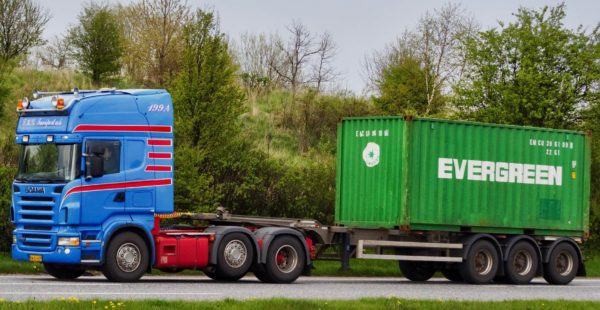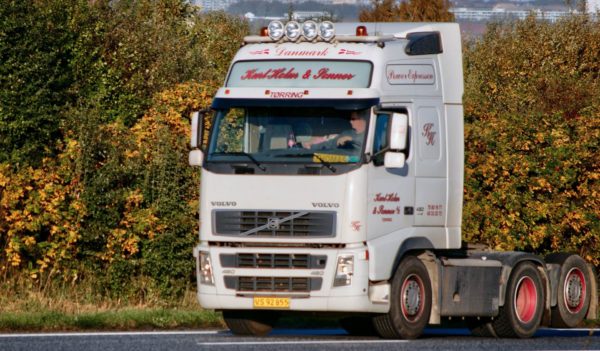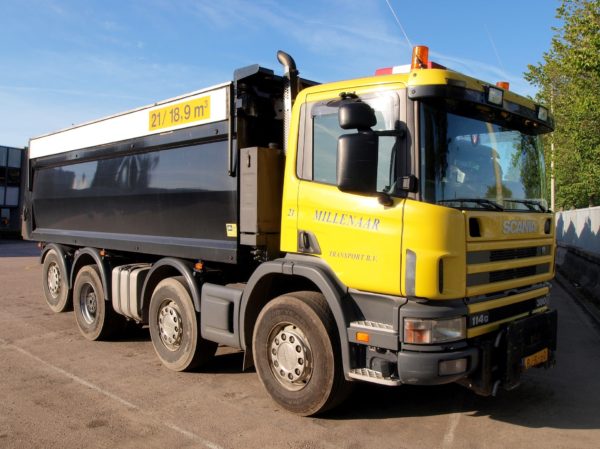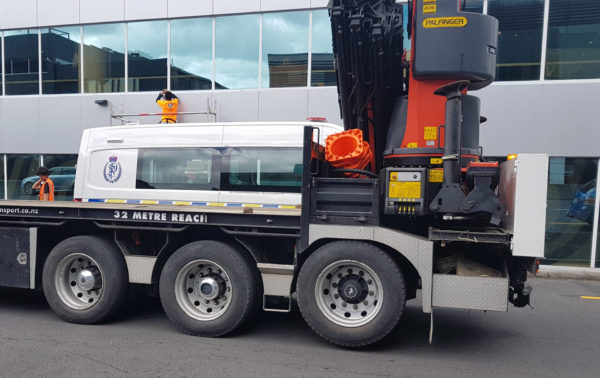What is a lift axle on a lorry or trailer?
An axle is the way in which weight is transferred from the lorry or trailer to the tyres. Different types of lorries have different numbers of axles. A small box van will have two axles, like a car, whereas an articulated lorry with a semitrailer could have six or seven axles. Specialist lorries and trailers could have more axles. In other countries, lorries can have nine or more axles without a permit, depending on the application and design.
The more weight the lorry carries, the more tyres that are required to support the weight. However, the more tyres that are in contact with the road, the more rolling resistance the engine has to overcome and the more tyre wear (and therefore cost) for the driver.
Lift axles are a way to lift some tyres off the road when they are not required to support the load. If a lorry needs all the axles occasionally, there’s already the weight penalty, so a way of improving fuel economy and reduce road noise is to lift the wheel off the road.
Rigid lorries
Rigid lorries don’t pull a trailer. Their configurations are:
4×2: four axle ends (i.e. two axles) with two axle ends (i.e. one axle providing propulsion)
4×4: four axle ends (i.e. two axles) with both axles providing propulsion; these tend to be specialist off-road trucks used to service remote locations, or military vehicles
6×2: six axle ends (i.e. three axles – one steer axle at the front and two axles at the back) with one axle providing propulsion. These are common for road freight.
6×4: six axle ends with one axle steering and two axles providing propulsion. These lorries are common on-road when occasional use off-road is required, such as building sites and quarries.
8×4: two steering axles and two drive axles (usually dual wheels) for when heavy loads are required to be transported and off-road conditions may be encountered.
Lift axles also make manoeuvring much easier. When all axles are on the ground, one will always be scrubbing sideways in tight turns, meaning more power is needed to move the vehicle and there’s more tyre wear.
Combination vehicles
The tractor unit will still be referred to as a 4×2, 6×2, 6×4 or 8×4, but it will be pulling either a semitrailer or (commonly on the continent) a pull trailer using a drawbar. The steer wheels will always be singles, but the drive wheels will be duals in a 4×2, and either one axle dual and one axle single in, or both axles duals in a 6×4. 8x4s usually have both rear axles with duals.
Semitrailers will have up to four axles with dual or single wheels.
Lift axle configuration
Lift axles can appear on both a trailer and tractor unit. The most common configuration in the UK is a mid-lift axle – this is where the rearmost axle on a 6×2 tractor unit is the drive axle and the one in front of that is the lift axle.

If the lift axle is behind the drive axle, it’s called a pusher axle.

If the lift axle on a trailer is the rearmost axle, it’s called a tag axle. Often, these axles passively steer (‘rear-steer’) to reduce scrubbing around corners.

Mid-lift axles are more stable and more comfortable for the driver because, when lifted, the wheelbase is longer.
Specialist vehicles, for example, those with cranes, can also have lift axles.

- Understanding the National Standards for Riding Mopeds and Motorcycles
- Livestock Transport Rules UK: A Complete Guide to Animal Transportation Requirements
- The Role of Safety Advisers in Dangerous Goods Transport
- Sustainable Driving: Reducing Your Environmental Impact on the Road
- Developing Effective Lesson Plans for Driver Training
- UK Agricultural Vehicle Registration and Tax Relief
- Challenges of Transporting Radioactive Materials (Class 7)
- Exemptions and support for Clean Air Zone charges
- Navigating Legal Requirements: The UK Motorcycle Licensing Rules
- Safe Transportation of Agricultural Chemicals and Hazardous Materials
- Innovations in Vehicle Construction for ADR Compliance
- Motorcycle Recovery Operations: How to Recovery a Broken Down Motorbike
- Alternative Fuels in Agricultural Vehicles
- Carriage of Dangerous Solids in Bulk Containers
- Understanding Limited Quantity Exemptions in ADR